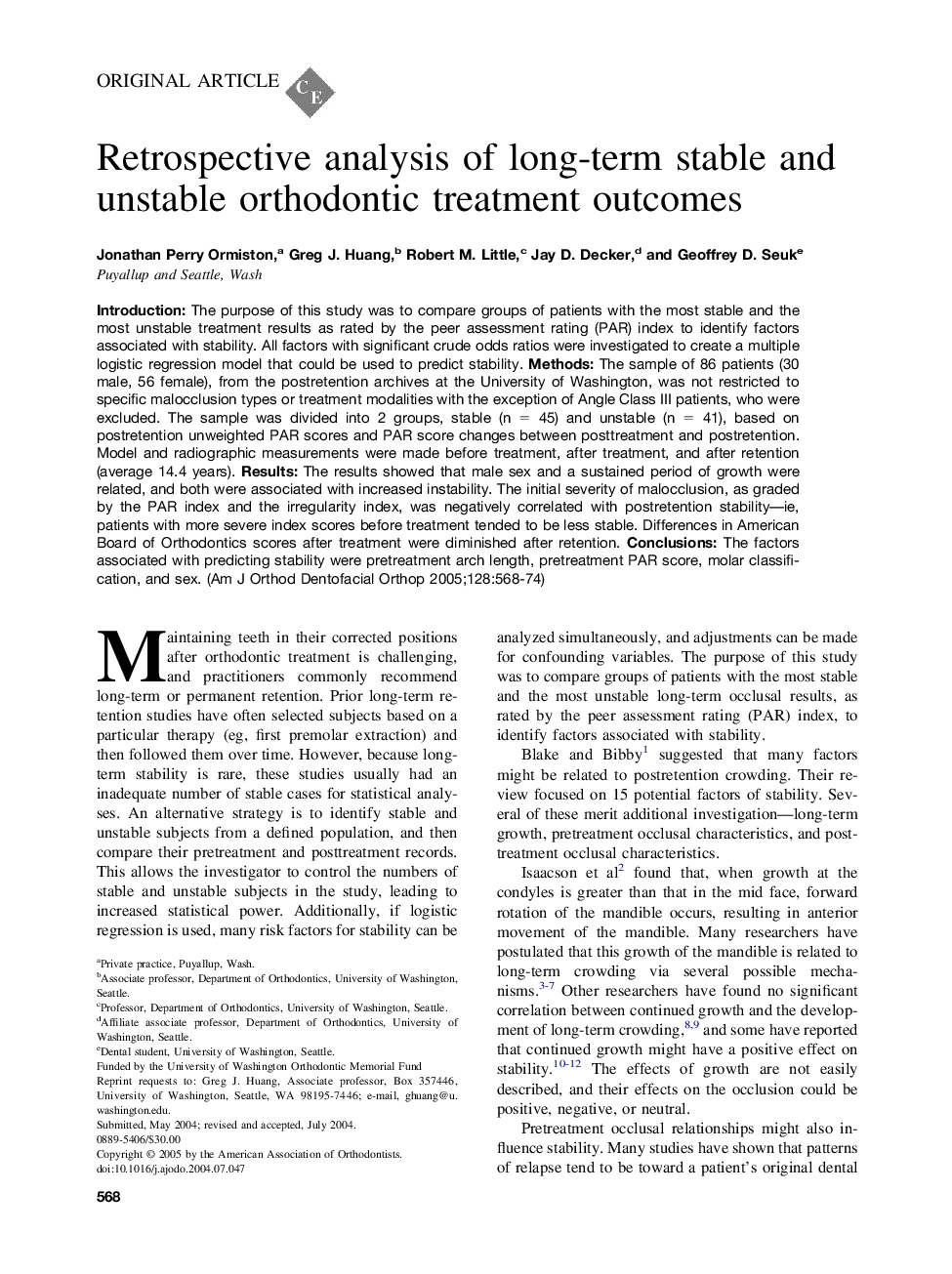| Article ID | Journal | Published Year | Pages | File Type |
|---|---|---|---|---|
| 9992536 | American Journal of Orthodontics and Dentofacial Orthopedics | 2005 | 7 Pages |
Abstract
Introduction: The purpose of this study was to compare groups of patients with the most stable and the most unstable treatment results as rated by the peer assessment rating (PAR) index to identify factors associated with stability. All factors with significant crude odds ratios were investigated to create a multiple logistic regression model that could be used to predict stability. Methods: The sample of 86 patients (30 male, 56 female), from the postretention archives at the University of Washington, was not restricted to specific malocclusion types or treatment modalities with the exception of Angle Class III patients, who were excluded. The sample was divided into 2 groups, stable (n = 45) and unstable (n = 41), based on postretention unweighted PAR scores and PAR score changes between posttreatment and postretention. Model and radiographic measurements were made before treatment, after treatment, and after retention (average 14.4 years). Results: The results showed that male sex and a sustained period of growth were related, and both were associated with increased instability. The initial severity of malocclusion, as graded by the PAR index and the irregularity index, was negatively correlated with postretention stability-ie, patients with more severe index scores before treatment tended to be less stable. Differences in American Board of Orthodontics scores after treatment were diminished after retention. Conclusions: The factors associated with predicting stability were pretreatment arch length, pretreatment PAR score, molar classification, and sex.
Related Topics
Health Sciences
Medicine and Dentistry
Dentistry, Oral Surgery and Medicine
Authors
Jonathan Perry Ormiston, Greg J. Huang, Robert M. Little, Jay D. Decker, Geoffrey D. Seuk,
